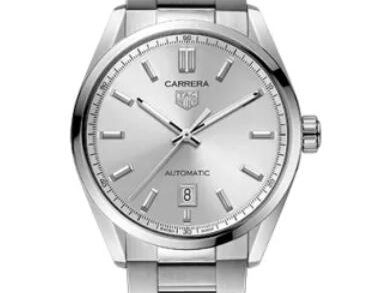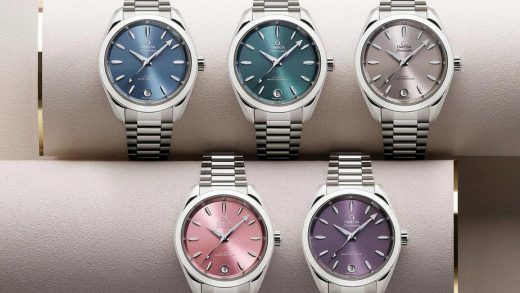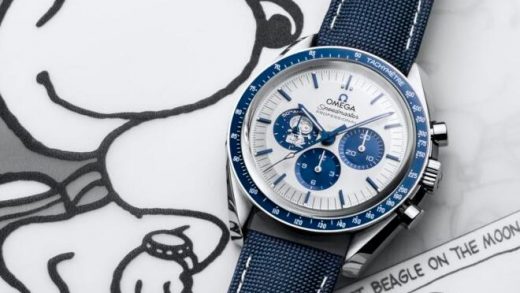It’s easy to get lost in the romance, particularly when it comes to vintage luxury replica watches. Today’s enthusiasts know the story of the “Steve McQueen” Monaco chronograph: In 1970, the “King of Cool” wore a midnight blue Heuer Monaco for the filming of Le Mans and it all appears beautifully serendipitous. McQueen was at the height of his career, with Bullitt and The Thomas Crown Affair both being hits in 1968. Le Mans was his passion project, the movie that he had always wanted to make, with driver Michael Delaney emerging victorious in this most grueling and glamorous endurance race. He does not win for himself, but drives heroically to ensure that the team Porsches finish 1-2.
Today, when we thumb through magazines or visit 1:1 UK fake watches shops, it is inevitable that we see McQueen and his Monaco, the handsome hero in the white racing suit, the red Heuer logo on his chest, the blue-and-white Heuer chronograph on his wrist. So we imagine that things had gone well for Heuer when the movie was released in June 1971 – the Hollywood star, his heroic drive and his bold Swiss made copy watches, available in stores throughout the world. It’s easy to picture that back in 1971 every enthusiast jumping behind the wheel of a sports car wanted to wear the “Steve McQueen” Monaco, or at the very least another Swiss movements replica Tag Heuer chronograph watches.
A Different Reality
But as we dig back through these layers of romance, we encounter a different set of facts. The filming of Le Mans was chaotic, described by property master Don Nunley, in his book Le Mans in the Rearview Mirror, as “a miserable experience for everyone involved.” Shooting began in June 1970, with no script, no budget, and no leading lady. It ended six months later, according to Nunley, having taken an immeasurable human cost, with injuries to drivers, lost friendships, and broken professional relationships. The film’s release in June 1971 hardly brought a change in its fortunes, with both the movie and McQueen’s performance being criticized harshly.
So what did this mean for the Monaco chronograph? Even if filmgoers weren’t flocking to see Le Mans, surely AAA replica watches shoppers would be inspired by the images of McQueen? Well, that also didn’t work out so well. After the company had printed thousands of posters and promotional items for retail stores, McQueen objected to the use of his images in the Heuer selling effort. The posters remained in Heuer’s warehouses, as McQueen threatened legal action. Yes, the King of Cool had chosen to wear a Monaco in the filming of Le Mans, but in these early years Heuer had no rights to use his image in marketing the best fake watches.
Looking beyond the worlds of movies and perfect replica watches, other circumstances made it difficult to sell Swiss chronographs in the early 1970s. President Lyndon Johnson was committed to funding both the Vietnam War and expansive social programs, but the deficits resulting from this “guns and butter” policy led to “stagflation,” with America gripped by high inflation and unemployment and slow economic growth. In the first half of the decade, oil shocks and embargoes increased the price at the pump by 350 percent, unemployment spiked, and Watergate eroded faith in the political system. Western European countries suffered much of the same malaise, known there as “eurosclerosis.” Swiss watch companies faced additional challenges, as the Swiss franc rose steadily against the US dollar. And far less-expensive quartz cheap fake watches from Japan presented stiff competition.
Add all this together, and we understand why Heuer struggled to sell the Monaco and its other chronographs in the early 1970s. Top Tag Heuer fake watches developed additional versions of the Monaco, including a three-register manual-winding model (circa 1971), a simpler model with only one chronograph recorder (circa 1972), and finally the two-register, manual-winding model (circa 1974), but these efforts were in vain.
The year 1974 would mark the last appearance of any version of the Monaco in a Heuer catalog. In Spring 1975, high quality Tag Heuer replica watches announced to its dealers that the Monaco, along with several other models, would be discontinued. Monaco chronographs were offered to dealers at close-out prices ranging from $69.50 for the three-register manual-winding models to $93.50 for the reference 1133 automatic models, as worn by McQueen. Six years after being introduced amid the hype of the world’s first automatic chronographs, it seemed that the Monaco had come to the end of its life, the proverbial Porsche 917 crashed and bouncing from Armco to Armco on Circuit de la Sarthe.

Replica Tag Heuer’s First Black-Coated Chronographs
In September 1975, at the Autodromo Nazionale di Monza, Ferrari driver Niki Lauda finished third in the Italian Grand Prix, enough to clinch the Formula One Drivers Championship and to lock up the Constructors Championship for Ferrari, the first overall win for Ferrari or its drivers since 1964. Heuer was a sponsor of Scuderia Ferrari and the timing equipment that Heuer developed for the team gave it an edge both on the company test track at Fiorano and in the races. To celebrate the Ferrari victory, in 1976, Heuer would introduce a new model of chronograph, called the “Monza,” which would mark Heuer’s entry into the world of black-coated chronographs.
The Tag Heuer Monza fake watches for sale took the case of the first-generation automatic Carreras, from 1969 (reference 1153), but cast it in base metal and then applied a surface finish to give the super clone watches wholesale online its black appearance. To make the Monza chronograph more affordable, the first models were powered by the Calibre 15 movement (with 30-minute chronograph capacity), rather than the more costly Calibre 12 (with its 12-hour capacity). The Monza must have met with a degree of commercial success, as Heuer’s 1977 catalog added black-coated versions of the Carrera and Montreal, which contained the more prestigious Caliber 12 movement, and the 1977 catalog also included a new version of the Monza that used the Calibre 12. No doubt, however, that the Monza was best quality replica Tag Heuer watches’ leading black-coated chronograph, produced in far greater quantities than the Carrera and Montreal.

Introducing The Black-Coated Monaco
Having gotten into the business of offering black-coated chronographs and finding some success with the first models, Tag Heuer replica watches store added a fourth black-coated model to the line-up – the Monaco. The recipe seemed easy enough: take some of the left-over cases and movements from the discontinued Monaco reference 74033, black-coat the stainless-steel cases, and work on a new style of dial and hands to suit this new black frame.
The reference 74033 had been offered with either a blue dial and white registers (reference 74033 B) or a charcoal gray dial with matching gray registers (reference 74033 G). Both were powered by the Valjoux 7740 movement, offering a 12-hour recorder at nine o’clock and a 30-minute recorder at three o’clock, with a date at six o’clock. Like their Calibre 12 predecessors, the reference 74033 models had no “running seconds,” with the date window at six o’clock occupying the real estate that would otherwise be available for this third register.
Fake Tag Heuer watches site shop developed a new dial for the black-coated Monaco, following the formula of the Heuer’s other black-coated chronographs: The dial and registers were matte black, with the markers painted in luminous material. Whereas the Monza and Montreal used red accents, the Black-Coated Monaco used bright orange hands for the chronograph hands – hours, minutes and seconds – and bright white hands to show the time-of-day. With its square case, the Monaco never incorporated an inner bezel, so that the black dial meets the black case, with no visual interruption for the inner bezel. The case-back, crown and pushers were stainless steel, as the designers must’ve known that the coating would wear too quickly on these high-contact elements.
“The Monaco must have already looked like something from another planet when it launched in 1969,” says Nicholas Biebuyck, Heritage Director at replica TAG Heuer watches for men. “With its brutalist angular case, mixture of finishes, and unusual case construction, the black-coated Monaco incorporated innovative ideas that would take some years to gain traction in the replica watches paypal industry. Combine the geometry of the Monaco with the almost totally black finish to the case and dial, with these pops of contrast in the orange accents and the bright white hands, and you have an object that should, in theory, be stealthy but in fact draws attention like very few other China fake watches.”


